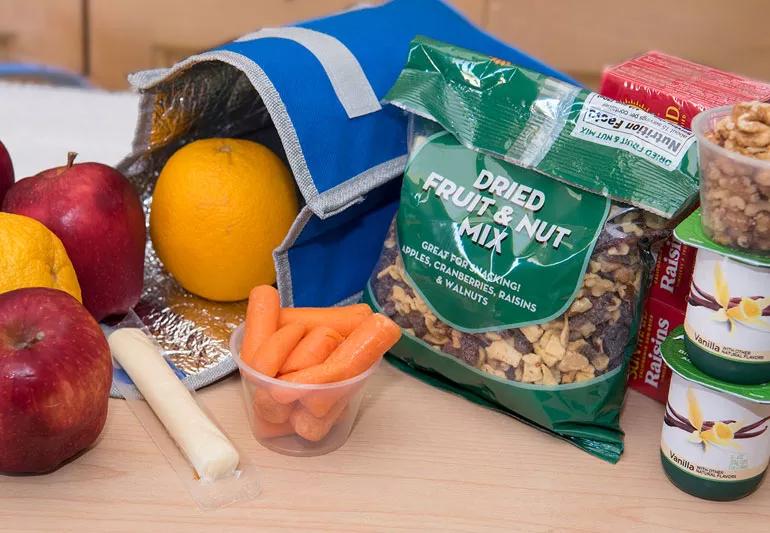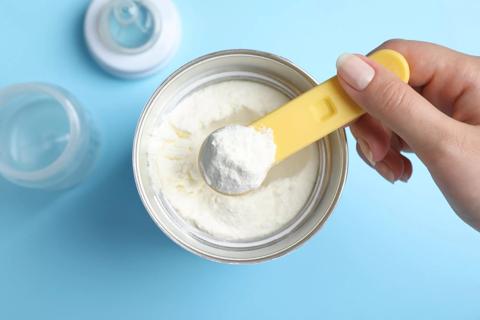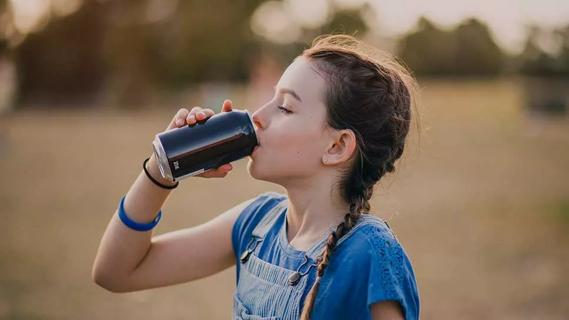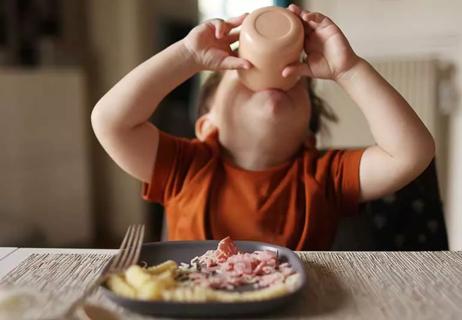Teach your children healthy habits to last a lifetime

Among the many things parents worry about at the beginning of the school year – and especially this year with coronavirus (COVID-19) always lurking – packing a healthy lunch is an important part of the equation.
Cleveland Clinic is a non-profit academic medical center. Advertising on our site helps support our mission. We do not endorse non-Cleveland Clinic products or services. Policy
With the rising tide of obesity in the nation over the last 30 years, it’s not only extremely important that children eat healthy, balanced meals throughout the day – it’s vital. Eating a nutritious school lunch is key to helping minimize the childhood obesity epidemic, but it’s also helpful in warding off illness. Making sure that your child is eating nourishing foods can help their immune system perform at its best.
So what can you pack that is nutritious, not-time-consuming and that your kids will actually eat? Pediatric dietitian Jennifer Hyland, RD, discusses the importance of healthy childhood eating habits and gives you (and your kid) real food options
We know that good childhood eating habits not only lead to better eating habits as adults, but also less risk of obesity in general. Because of this, parents need to stay involved with the nutritional choices that children make as they grow into teens.
Children establish their eating habits early on in their lives. They also mirror their parents in a variety of habits, which is why it’s important to practice healthy eating, make family meals and establish meal-planning techniques.
With the new school year starting up, it’s the perfect time to reflect back on your eating habits as parents to ensure better health for yourself and your family. This reflection can be a great teaching moment for kids, and it’s a great way to talk to your children about nutrition, food moderation, portion size and overall long-term health.
Start practicing this now at home. And you can start small. If your kids aren’t used to having a vegetable with their lunch, slowly begin to offer one veggie of choice each day. And make sure they see you do it too! As they get used to that you can add a second serving and by the time they are going to school you can work your way up to an appropriate portion for a school lunch.
Ideally, packing your child’s lunch would be the best way to ensure that they eat a balanced lunch filled with one full serving or more of fruits and vegetables, but sometimes it’s not always an option.
If you’re opting for school lunches, sit down with your child and review the weekly lunch menu that’s offered at their school. Getting to know the weekly menu and discussing the meal options with your child will help ensure a healthy and more balanced plate.
“This strategy gives parents a great opportunity to discuss the benefits of different meal options and why certain foods may be healthier and make them feel better than others,” says Hyland. “Plus, involving the child in any decision-making process typically leads to better outcomes and acceptance – and the meal-planning process is no exception.”
It’s also important to note that if your child has concerns for food allergies, it’s crucial to alert the school authorities ahead of time. A letter from your physician outlining your child’s food allergies is the best way to ensure support from the school.
Spend some time as a family creating a list of enjoyable foods with your kids. Then rotate the food options from the list into your meals. This can help decrease boredom and ensure that they actually eat the packed lunch. Create a colorful chart or write food ides on Popsicle sticks to make for a fun and easy selection! This ensures that the food options are nutritious and things you have at home.
You can also start by asking your children what fruits and vegetables they would enjoy eating for lunch, but you may have to rethink how to make healthy food more kid-friendly. For example, a sliced up apple may be much more appealing than a whole one, says Hyland.
Once you have your food options, each morning (or on Sunday night you can pack for the whole week), you or your child will pick one food item per category below, which will make up the lunch.
Although kids are notorious for begging for delicious (and sugar-loaded) drinks with their meals, the ideal beverage choices for lunch are water or low-fat, unflavored milk. If you need to pack juice, choose a 4 or 6 ounce bottle of 100% juice.
Also, you can freeze a small bottle of water for your child and use it as an ice pack in the lunch.
Remember: Eating a healthy lunch not only helps your child perform well in class. It also helps form healthy habits for life and maintain a healthy weight.
Learn more about our editorial process.

When breastfeeding doesn’t go as planned, you may need to supplement with formula or donor breast milk — and that’s OK

Look for snacks that are low in sugar and high in fiber, protein and healthy fats

No amount of caffeine is safe for kids under 12, and kids 12 to 17 should be cautious about how much they consume

They aren’t unhealthy, but they’re probably a waste of money

Tiny kidneys and tiny tummies don’t mix well with water

Vomiting and fevers are a hard no — other symptoms are a judgment call

If your child is nervous or apprehensive about school, communication is key

Turn down the pressure, but don't stop offering

Your metabolism may torch 1,300 to 2,000 calories daily with no activity

A gentle touch in all the right places may help drain your sinuses